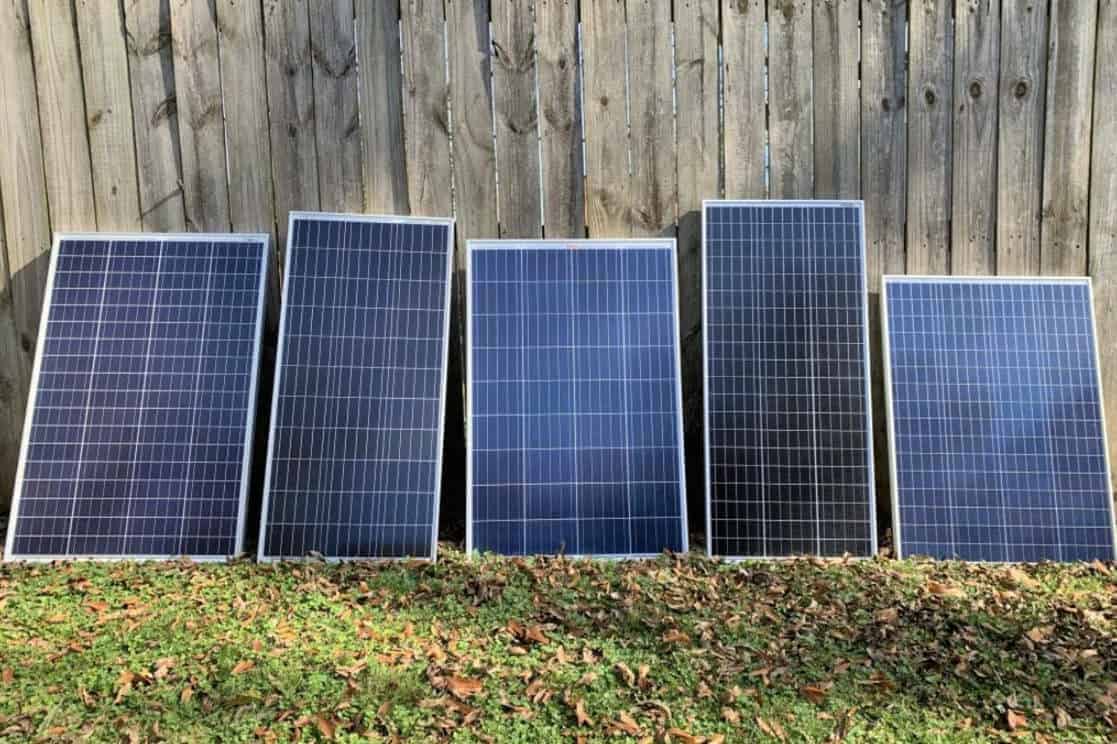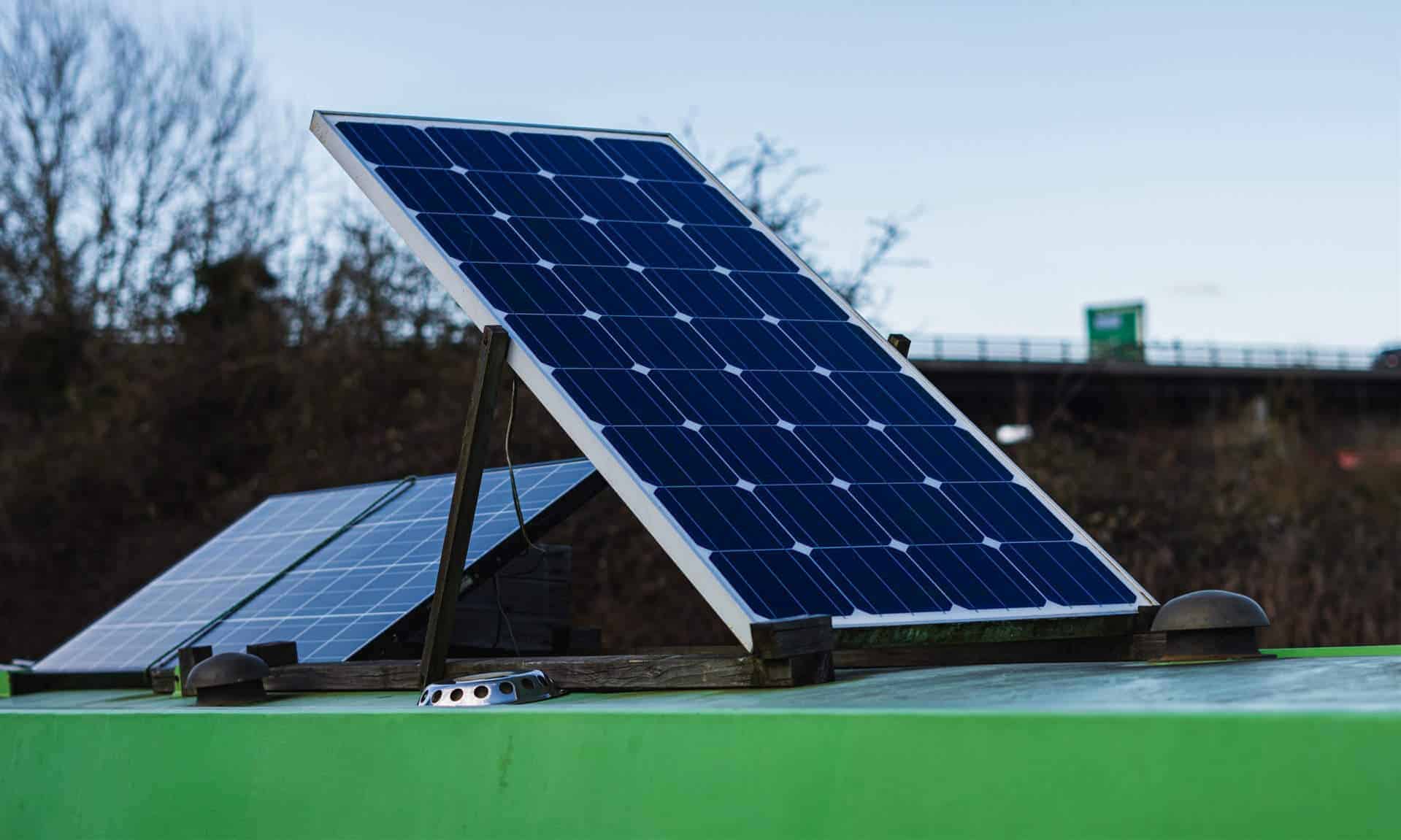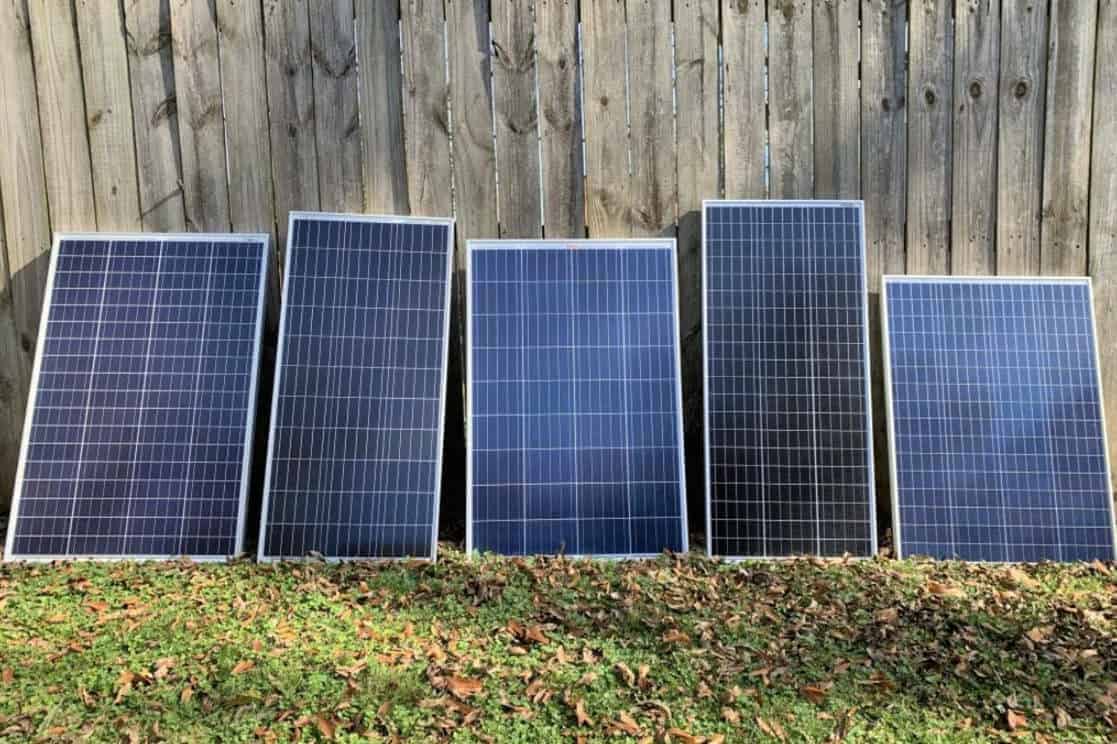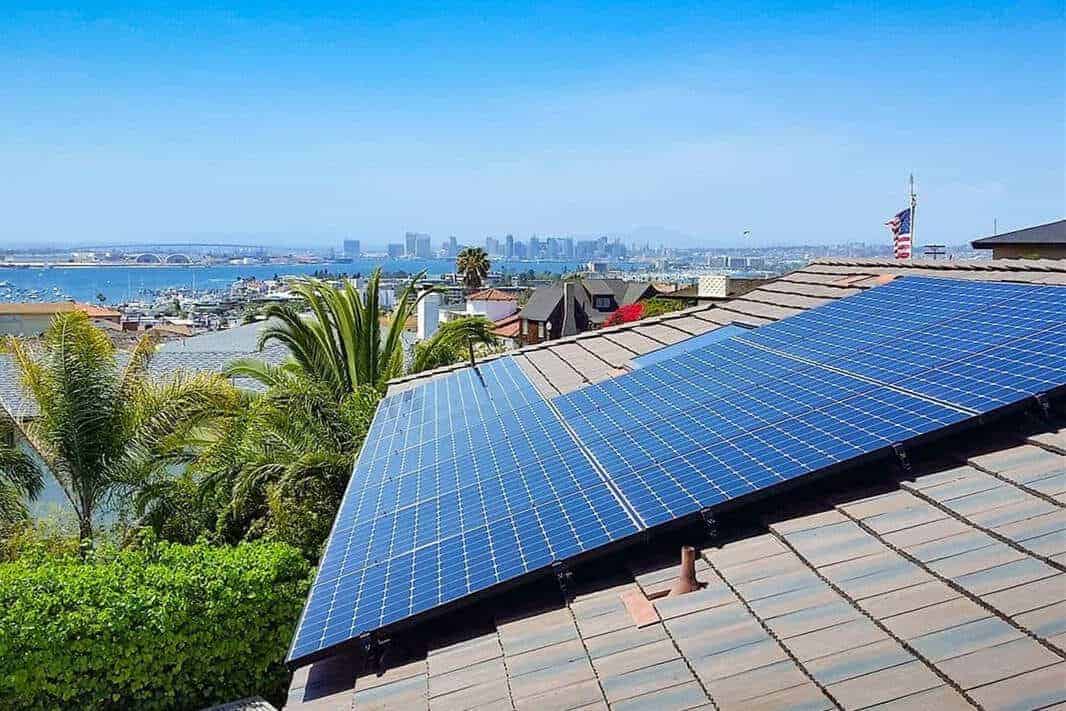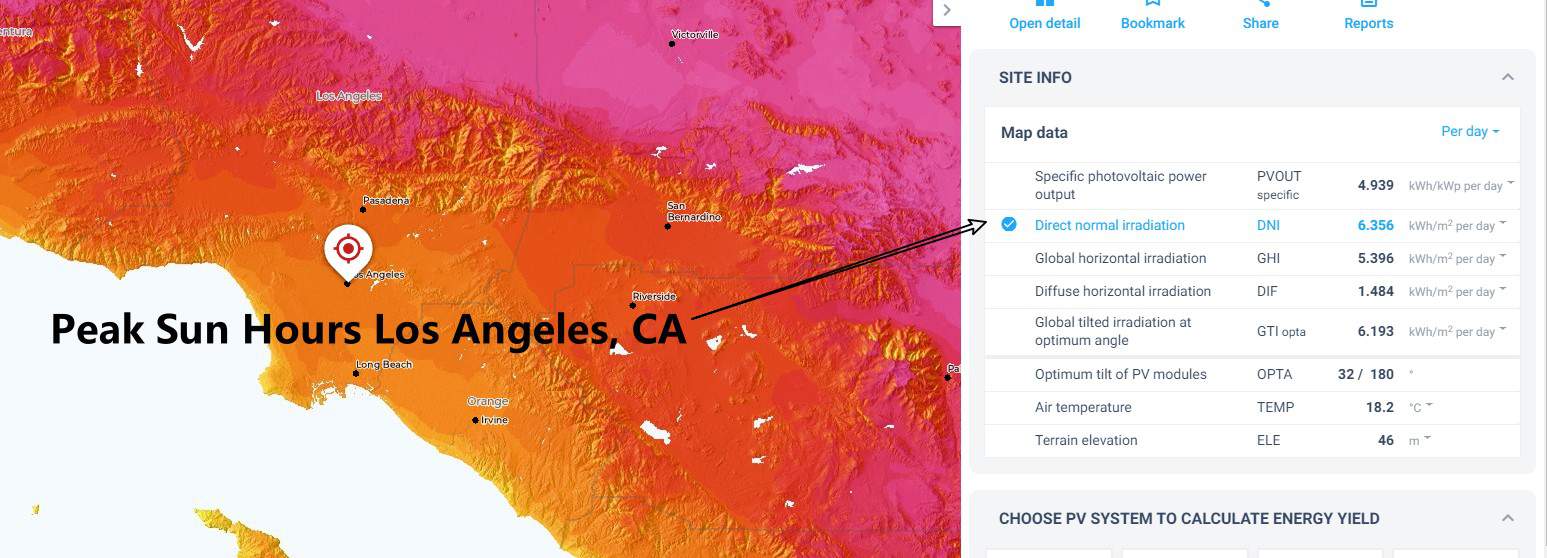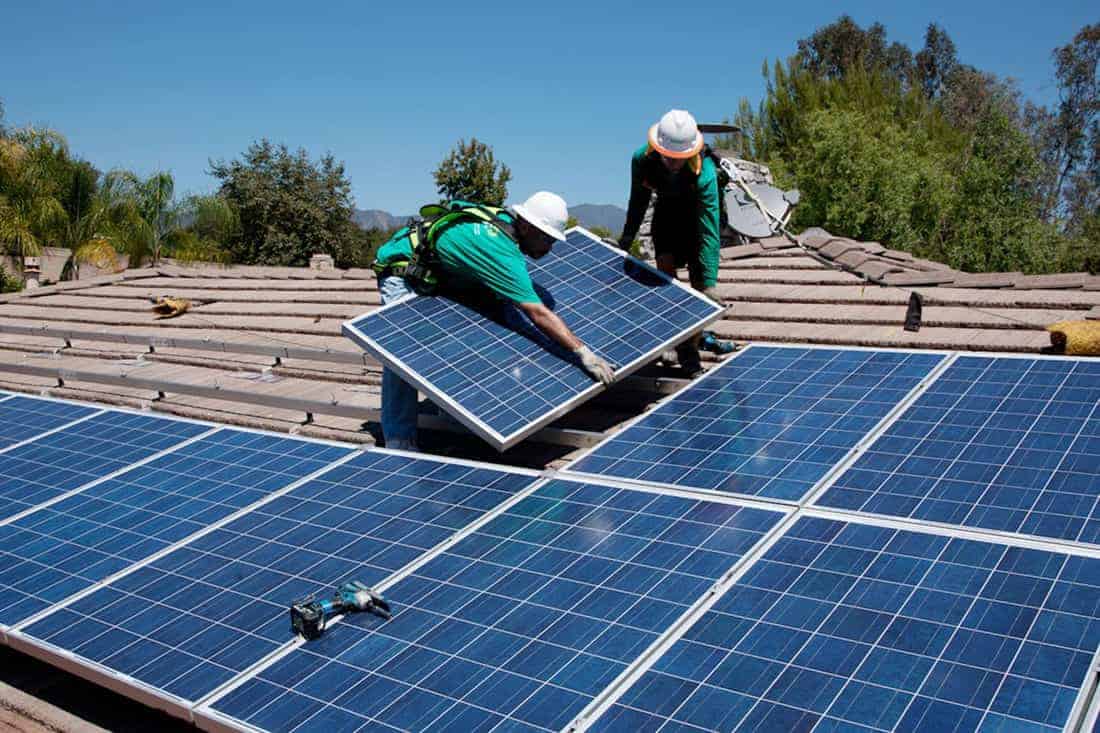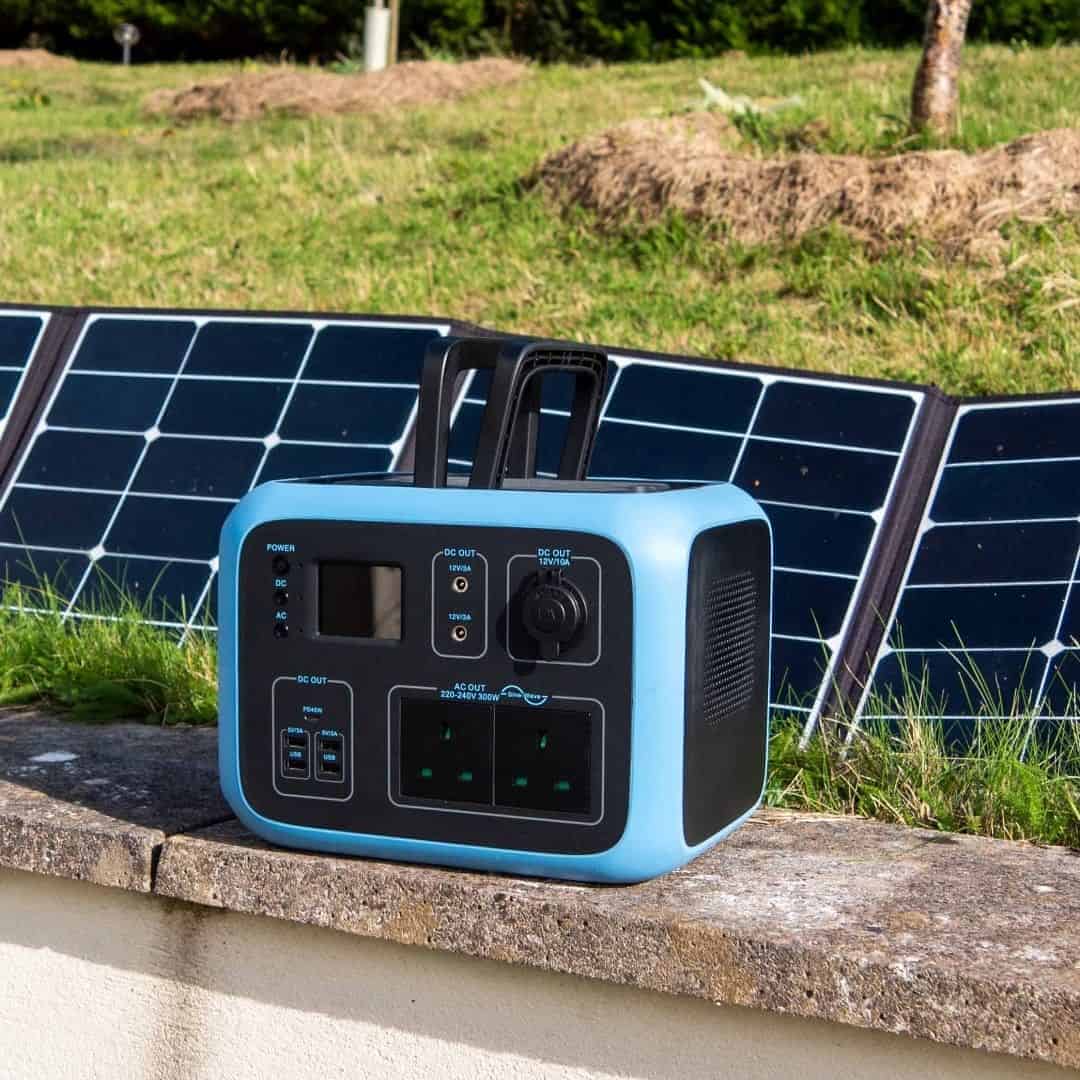Solar panels come with their rating; these are the figures you see on the nameplates of solar panels. Online solar panel merchants even quote them on their listings. Let me give you some examples to refresh your memory.
Normally you’ll see figures like 100W, 325W, 400W, etc. Or 12V, 24V, and 48V. All these figures collectively represent the solar panel’s ratings. And they reveal how much of a punch the solar panel is packing.
Solar panel rating defines a solar panels performance of a solar panel, kinda like the specs of a performance vehicle. It defines the solar panel’s maximum power output. In other words, what the solar panel is capable of in terms of power generation.
How many amps are there in a 100-watt solar panel?
For that, we’ll need some calculators. But before that, let’s explore solar power output ratings.
What is Solar Power Output Rating
Every solar panel comes with an output rating that tells us how much juice they can crank out. This number gives us an idea of just how powerful the solar panel actually is. Our own solar panel here packs quite a punch at 100W strong – which sounds pretty impressive if you ask me!
A solar panel’s power output is measured in watts (W) or kilowatts (kW).
What is an Ampere (Amp)
Essentially, amperage is how we measure current flowing through those wires inside your solar panel system. Think of it like the current of a stream, and your solar panel is the source. We measure this electric current by a unit called amperes, amps, or simply A. Tomayto, tomato; am I right?
Now we know what watts (W) and amps (A) represent. Is there a correlation between the two?
What is the Relationship Between Watts and Amps
For me to explain the relationship between watts (power) and amps (current), I need to introduce a third player, volts (V). We now have a threesome.
According to Ohms Law, power (watts) is the product of current (amps) and voltage (volts).
| Power (P) = Current (I) x Voltage (V) |
Still confused? Let me clarify. If you look at the nameplates of certain appliances, you’ll only find the amp and the voltage ratings.
For example, my computer’s monitor is rated 1.78A and 14V. To find the power requirement for this computer monitor to function, we multiply 1.78 amps by 14 volts to find 24.92 watts.
| Power = Current x Voltage
Power = 1.78 amps x 14 volts Power = 24.92 watts |
But we’re not discussing electrical appliances, are we? Let’s talk about solar panels.
On solar panel listings, you’ll always find two ratings; the power output rating (in watts) and the voltage rating (in volts). In most cases, you won’t find the amperage (in amps) of the solar panels. Amperage is the great unknown and the subject of our article today.
So, how do you calculate amperage?
Determining the Amperage of a 100-Watt Solar Panel
According to our man, Ohm, we already know that power is the product of multiplying voltage and current (P=IV). But with a little mathematical gymnastics, we can make current (I) the subject. How? Watch and learn.
| If Power = Current x Voltage
Isolate Current by dividing both sides of the equation by voltage Power ÷ Voltage = [Current x Voltage] ÷ Voltage
Current (I) = Power (P) ÷ Voltage (V)
Or simply, I=P/V |
Back to the question of the occasion, how many amps does a 100-watt solar panel produce? Well, the amperage will depend on the voltage rating of the solar panel. Did you know that different solar panels come with different voltage ratings? Well, they do.
Solar panels for domestic use typically come in three voltage flavors: 12V, 24V, and 48V. Now let’s see how many amps of current each 100W solar panel pumps out:
Calculating Amperage for Typical Residential 100-watt Solar Panels
To calculate current, we divide the solar panel power output rating by the voltage rating. For a solar panel rated 100W and 12V, your calculation will look something like this:
Current = Power Output ÷ Voltage
Current = 100W ÷ 12V
Current = 8.33A
Now let’s see how our other 100W solar panels fair:
| Voltage Rating | Calculation (I=P/V) | Amperage |
| 12 | 100 ÷ 12 | 8.33A |
| 24 | 100 ÷ 24 | 4.17A |
| 48 | 100 ÷ 48 | 2.08A |
Real-World Considerations
In a perfect world, a 100W solar panel would be pumping out all the juice, all 100 of them. But in the real world, things don’t play like that. The 100W designation is only an indication of how much electric power the solar panel can generate at its peak performance.
However, there are multiple factors that may affect the actual performance (or power output) of a solar panel. They include:
1. Sunlight Intensity
Solar panels need sunlight to generate power, duh. But you can not expect the solar panel to work at its peak when sunlight intensity is poor. Remember this, kiddos; the power output of your solar panel is directly proportional to the strength (or intensity) of sunlight it receives. On cloudy days, your power output will be lower than the manufacturer’s rated capacity.
The image below shows the peak sun hours per day in Los Angeles, California.
How much energy does a 100 watt solar panel generate in a day in Los Angeles? Multiplying the peak sun hours in Los Angeles by the wattage of the solar panel:
Los Angeles is recorded to have 6.356 kWh/m2/day as its peak sun hours.
Therefore, the energy produced by a 100-watt solar panel in a day is:
100 watts x 6.356 = 635.6 watt-hours = 0.6356 kWh
2. Angle and Orientation of Your Solar Panels
The angle and orientation of your solar panels in relation to the sun can affect power output. What do I mean? Just because sun rays are shining on your solar panel doesn’t mean it’s getting top-shelf sunlight. Solar panel angles and orientation matter. For optimal performance, you should angle your solar panels to maximize sunlight exposure.
3. Temperatures
It may not look like it, but solar panels are sensitive to heat. Go figure, the irony, am I right? I get it; they are built for the sun, so it doesn’t make sense that they can’t handle the heat. While solar panels are built for the outdoors, increasing temperature negatively affects their efficiency. High atmospheric temperatures mean lower power output.
4. Shading
Even small amounts of shading; from trees and nearby buildings could impair your solar panel’s performance. So if you want to inch closer to the 100W that is promised by the manufacturer, you should insall your solar panels in places with minimal shading.
5. Solar Panel Aging and Degradation
Even solar panels grow old and fail to recapture the performance of their youth. With time comes the degradation of materials. Efficiency and power output drop as the years fly by. The good news is that degradation takes years. A solar panel can live to blow 25 candles.
Optimizing the Performance of a 100-Watt Solar Panel
What have we learned so far? The 100-watt rating on your solar panel is not guaranteed. It only indicates what your solar panel can generate at its peak performance. We cannot force the solar panel to generate 100 watts, but we can help it achieve those numbers. How?
1. Optimal Solar Panel Placement
We can reduce shading by installing our solar panels in the best places. How? When scouting for a spot, ensure that it’s clear throughout the day. That it has nothing (trees or buildings) to obstruct the path of sunlight.
2. Tilt and Orientation
Adjust your tilt angle and orientation to maximize your solar panel’s exposure to sunlight. The optimal solar panel tilt angle is usually equal to the latitude of your location.
For example, to install solar panels in Santa Cruz, California, you need to consider the city’s latitude. Santa Cruz, CA, sits along latitude 36.9778. So, install your solar panels at a tilt angle of 37°. For the best results, use single or dual-axis solar panels with sunlight trackers.
3. Cleaning and Maintenance
Dirt and grime on your solar panel’s surface can impede its performance. Dirt and grime on your solar panel’s surface can impede its performance. Dust and grime block sunlight exposure on a micro level. Micro or macro, a block is a block.
4. Invest in High-Efficiency Solar Panels
High-efficiency solar panels are, well, highly efficient. They do more with the available sunlight exposure.
5. Reduce Energy Losses
Just because your solar panel generates 100W of power doesn’t mean that you get all 100 watts of juice. Some of the power is lost within the system. And the wiring is the biggest suspect. To retain most of the power you generate, invest in low-resistance wires.
What Can I Run With a 100-Watt Solar Panel?
Now that you know how to tune your solar panel’s power output, let’s see how to put it to good use. What can a 100-watt solar panel run?
1. Small Electronics
With your 100W solar panel, you can power small electronics like portable fans, smartphones, LED light bulbs, and laptops. Just make sure that your total energy requirements don’t exceed 100W.
2. Camping Equipment
Camping is all about the basics; lanterns, flashlights, and maybe some portable speakers for your entertainment. A 100W solar panel can charge the batteries of these appliances, making your nights a little colorful.
3. Off-Grid Systems
A 100W solar panel can power a remote cabin, a garden shed, or a small off-grid home. You can store the power you generate in the day in a battery for nighttime consumption.
4. Water Pumps
Do you have water pumps for your water fountain, livestock, or garden irrigation system? With a 100-watt solar panel, you can power small water pumps and reduce your utility bills. Just ensure that the power requirements of your pumps don’t exceed 100 W.
Final Thoughts
And that, folks, is how you calculate the amperage of a 100-watt solar panel. While we were focusing on 100-watt modules, you can still apply this knowledge to other solar panels. Considering your solar panel’s amperage alongside its wattage is important for several reasons.
Among them is:
- Amperage helps you size your other solar components
- A grasp of your amperage and wattage helps you assess the efficiency of your solar panels
- Tracking amperage helps you work out the resistance in your wiring
- Knowing the amperage helps you avoid overloading your system
Keep it green, keep it solar; find the best solar panel for your situation.

